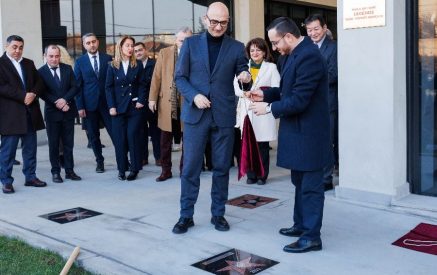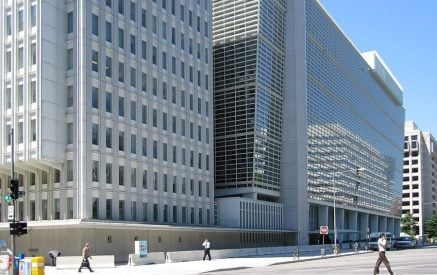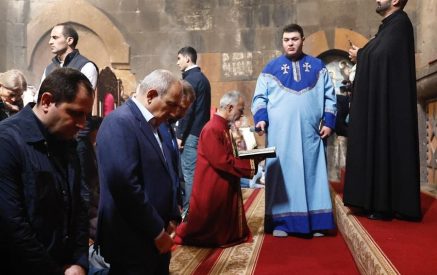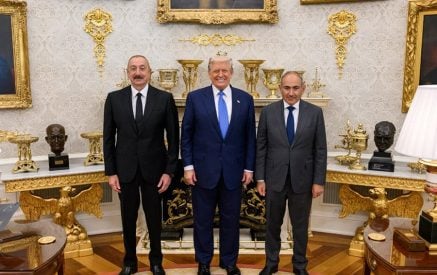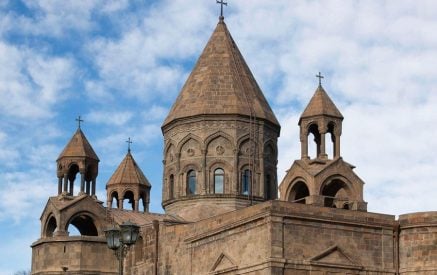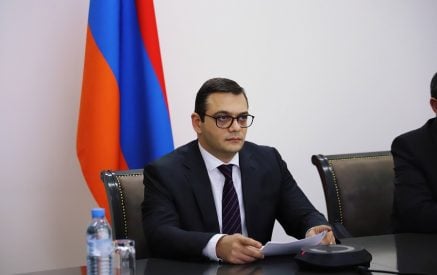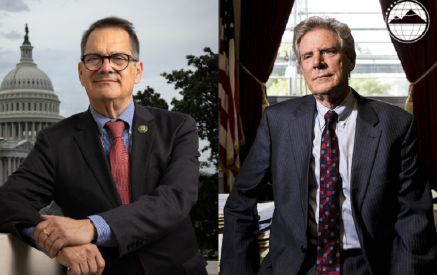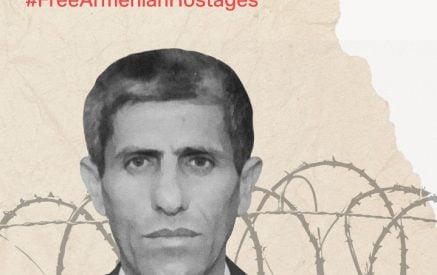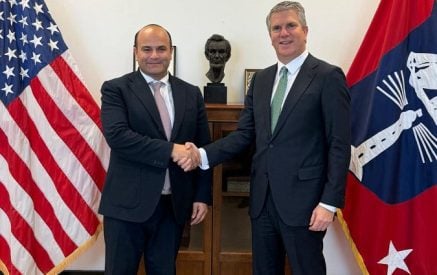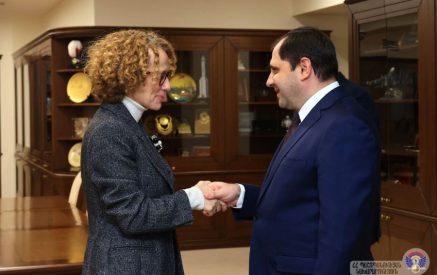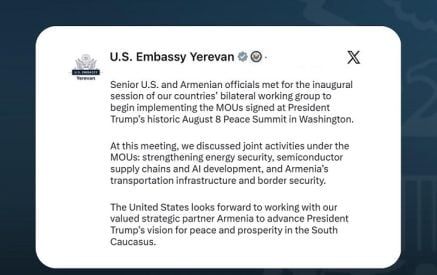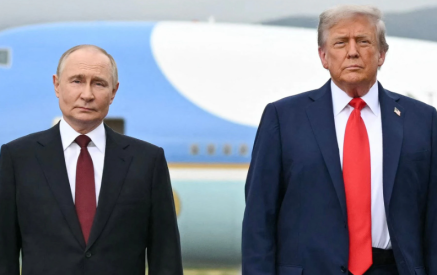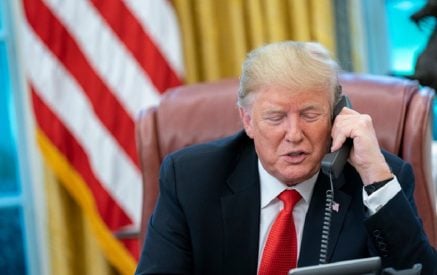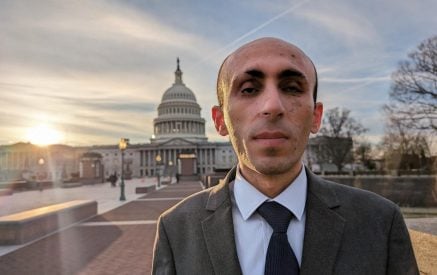By Vahan Zanoyan
“The strong do what they can, and the weak suffer what they must.” —Thucydides, 460-400 BC, Historian and General, author of The History of the Peloponnesian War.
Much has been written and spoken about the events of August 8 at the White House. Key documents, signed or initialed, have been made public and debated. Some commentators have hailed them as “massive” and “historic.” Others have criticized them as either pure theater or, even worse, as the kiss of death to sovereign Armenian statehood. And there have been many tones of voices in-between.
Read also
But if we look at what happened and, as importantly, why it happened, it basically boils down to a simple and, upon reflection, obvious fact: namely, Armenia was too weak to repel a probable Azerbaijani invasion, and desperate to make a deal.
By most accounts, the initial trigger of the event was the fear of an imminent military invasion by Azerbaijan earlier in the spring on southern Armenia, to establish a link between Nakhijevan and Azerbaijan by force, the so-called “Zangezur Corridor.” To preempt such a contingency, a flurry of diplomatic activity took place, spearheaded by US special envoy Steve Witkoff, between the US, Azerbaijan and Armenia. It basically gave Azerbaijan the route it wanted and a lot more, Armenia the removal of the threat of an imminent invasion, and the US a strategic presence in the southern Caucasus.
At the end, no peace agreement was signed, just a memorandum declaring mutual intentions to pursue peace. Azerbaijan got: 1) an agreement to establish the land route between Nakhijevan and Azerbaijan that it wanted, albeit not by the name and format that it had hoped for. The route will be named TRIPP — Trump Route for International Peace and Prosperity — to be managed by an American venture, under Armenian law; 2) full de facto normalization of its use of force to accomplish ethnic cleansing in Artsakh; 3) no requirement to withdraw from the 210 sq. km. of highly strategic territory that it continues to occupy in Armenia proper; 4) no requirement to commit to the release of the Armenian POWs and political prisoners illegally held in Baku; 5) an annulment of section 907 prohibiting the sale of military equipment to it from the US; 6) a dissolution of the OCSE Minsk Group, putting the last nail in the coffin of the status of Nagorno Karabakh negotiations; 7) agreement not to have foreign presence in Armenia along the Azerbaijan border; 8) no mention of the right of the population of Artsakh to return — something that has no international support and is not on the radar of the US either, but that too is a consequence of “the weak suffering what they must.”
In return, Armenia got one critical de facto concession, namely a postponement of an otherwise presumed imminent Azerbaijani invasion in the south – i.e., the (temporary?) removal of a threat. Of course, there were other significant sweeteners, largely designed to appeal to Armenian domestic political sensitivities — such as the absence of the term “corridor,” no foreign troops on Armenian soil, no disruption of the Armenia-Iran border, and no extraterritoriality — all of which also represent the removal of potential threats, but not concrete new offers to Armenia which it did not have before August 8. The defenders of the government’s policy claim that Armenia got much more than a temporary deterrent (more on this below), but these are more future hopeful expectations rather than concrete accomplishments.
Thucydides’ words, spoken some 2,500 years ago, ring true today. Had Armenia been strong enough to repel a new Azerbaijani invasion by itself, none of this would have happened, at least not in the way that it did. Any deal would in the very least have included the release of the political prisoners and POWs and the withdrawal of Azerbaijan from occupied Armenian territories. Even after the defeat of the 2020 44-day war, this could still have been achieved if Armenia had done more to strengthen its defenses in the past five years.
We should be very clear on this point: It was the fear of an Azerbaijani aggression, combined with Armenia’s presumed inability to repel it, and the government’s desperation to show progress on its “Peace Agenda” prior to next year’s elections, that enabled the events at the White House on August 8. There was no other compelling rationale or justification for it from Armenia’s perspective. Being weak and scared drove this policy and the US president was willing to play along.
The weak will suffer what they must – no judgment here, just a statement of the way it is. We owe it to ourselves to realize this. Those who glorify these “agreements” are doing as much, if not more harm as those to denounce them offhand, because both, each in its way, are distracting the public from the truth, and, as seriously, from drawing the right lessons from the Armenian condition since the 2020 war.
Here is what the sponsors of the August 8 events hope for and want us to believe: In three to four years, TRIPP will be built. Before it is officially launched, Azerbaijan, which so far has violated every provision of the November 9, 2020, ceasefire agreement, will withdraw from occupied territories in Armenia, and even before that, as a gesture of goodwill, it will release all the political prisoners and POWs. Armenia will change its constitution to the satisfaction of Ilham Aliyev, and Aliyev will finally sign the Peace Agreement with Armenia. Azerbaijan will stop, and, over time, reverse the anti-Armenian hate propaganda and “Western Azerbaijan” rhetoric from both the media and school textbooks. It will stop destroying churches, tombstones and other cultural heritage in Artsakh.
When TRIPP is inaugurated, Azerbaijan and Turkey will honor its terms and transport only commercial merchandise. Turkey will open the borders with Armenia, and trade and foreign investment will flow, without suffocating the local economy, and Armenian agricultural, construction and certain manufacturing ventures will be able to compete with Turkish producers and prosper. Armenia will thus finally come out of its semi-blockaded and isolated state.
The US will supply Armenia with much better defense technology than Armenia has had so far, and Armenia will benefit disproportionately from US technological and AI cooperation, because, thanks to its domestic competencies, it has higher absorptive capacity in that field than Azerbaijan or any other post-Soviet country. The US, showing uncharacteristic long-term staying power, will keep its interest in maintaining a strategic presence in the south Caucasus, long after Trump’s hopes for the Nobel Peace Prize evaporate and long after Trump himself is no longer in office, even if eventually the US comes to terms with Russia on Ukraine and NATO related issues. The US presence will continue to act as a deterrent against further Azerbaijani aggression, irrespective of the status of the Israeli-Iran confrontation.
It is more or less this utopic scenario that, implicitly or explicitly, is being officially promoted. Needless to say, nothing that we have witnessed since the 2020 war and even earlier, either in official rhetoric or in action, can lend any credence to that scenario. Instead, what is clear and empirically demonstrable is that peace with Armenia is not on Ilham Aliyev’s agenda. Furthermore, a strong, prosperous Armenia is not part of either Turkey’s or Azerbaijan’s vision of the future of the southern Caucasus.
Armenia simply cannot survive if it remains weak and desperate. Only by getting independently strong can we hope to realize some of the eventualities listed in that utopic scenario. The biggest risk that we face after August 8 is not the various documents that were signed or initialed at the White house; it is the domestic political necessity to salute those signatures as a victory for the peace agenda and subsequently submit to a new wave of complacency vis-à-vis our national defense.
To get stronger, the Armenian state cannot afford to continue dismissing the resources of the entire Armenian nation. Furthermore, as I have argued repeatedly in past articles, it has become abundantly clear that the Armenian state cannot safeguard the interests of the Armenian nation, as was hoped after Armenia gained its independence and in the early nineties. In fact, it is doubtful that the state can safeguard its own interests, let alone those of the nation. After the loss of Artsakh, the current 29,743 square kilometers does not have the strategic depth to be defensible strictly through the human and material resources that exist within that geographic area. It is therefore imperative for the “nation” to reorganize itself, first, to secure its own survival as a potent political and economic transnational entity, and second, to secure the survival and long-term viability of the state.


